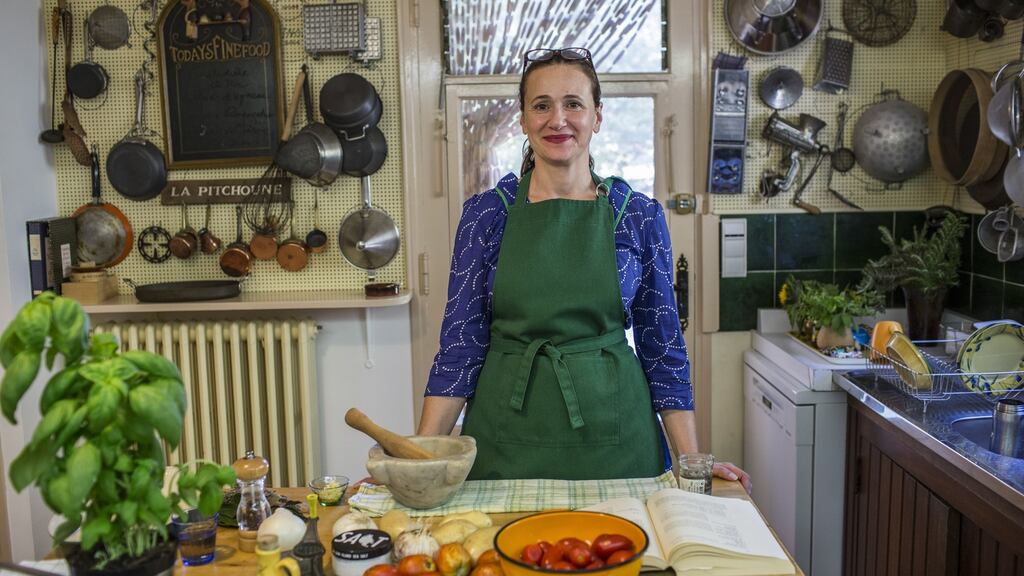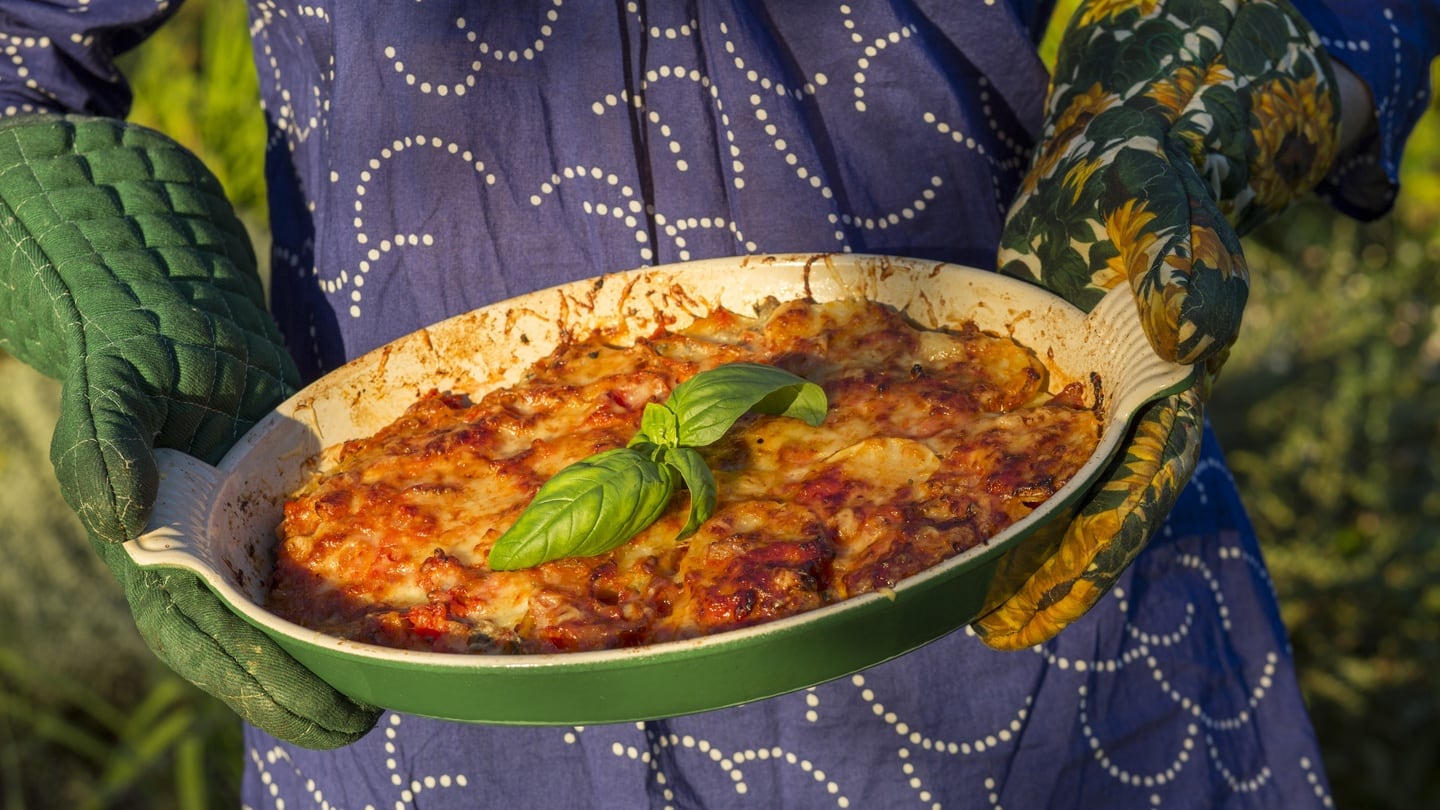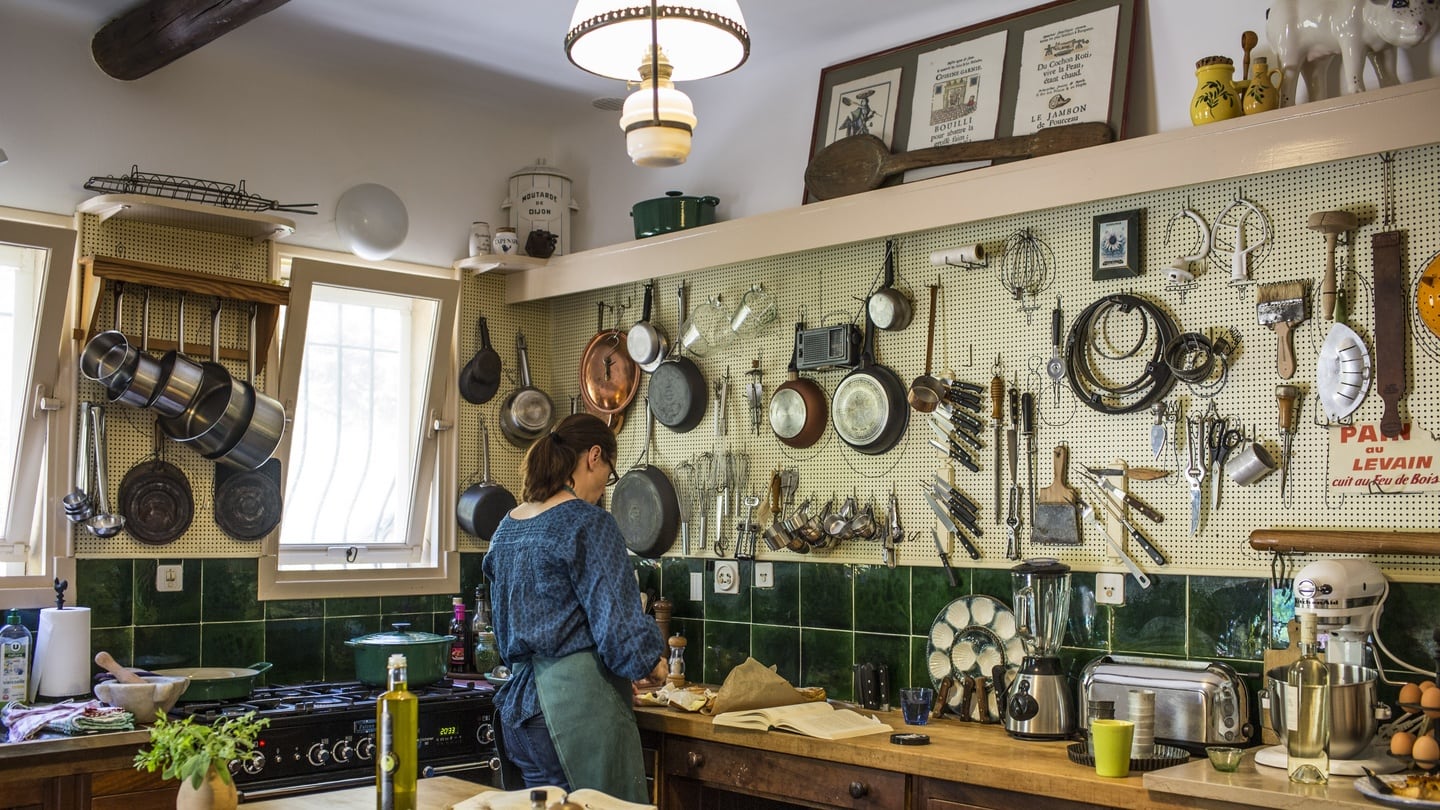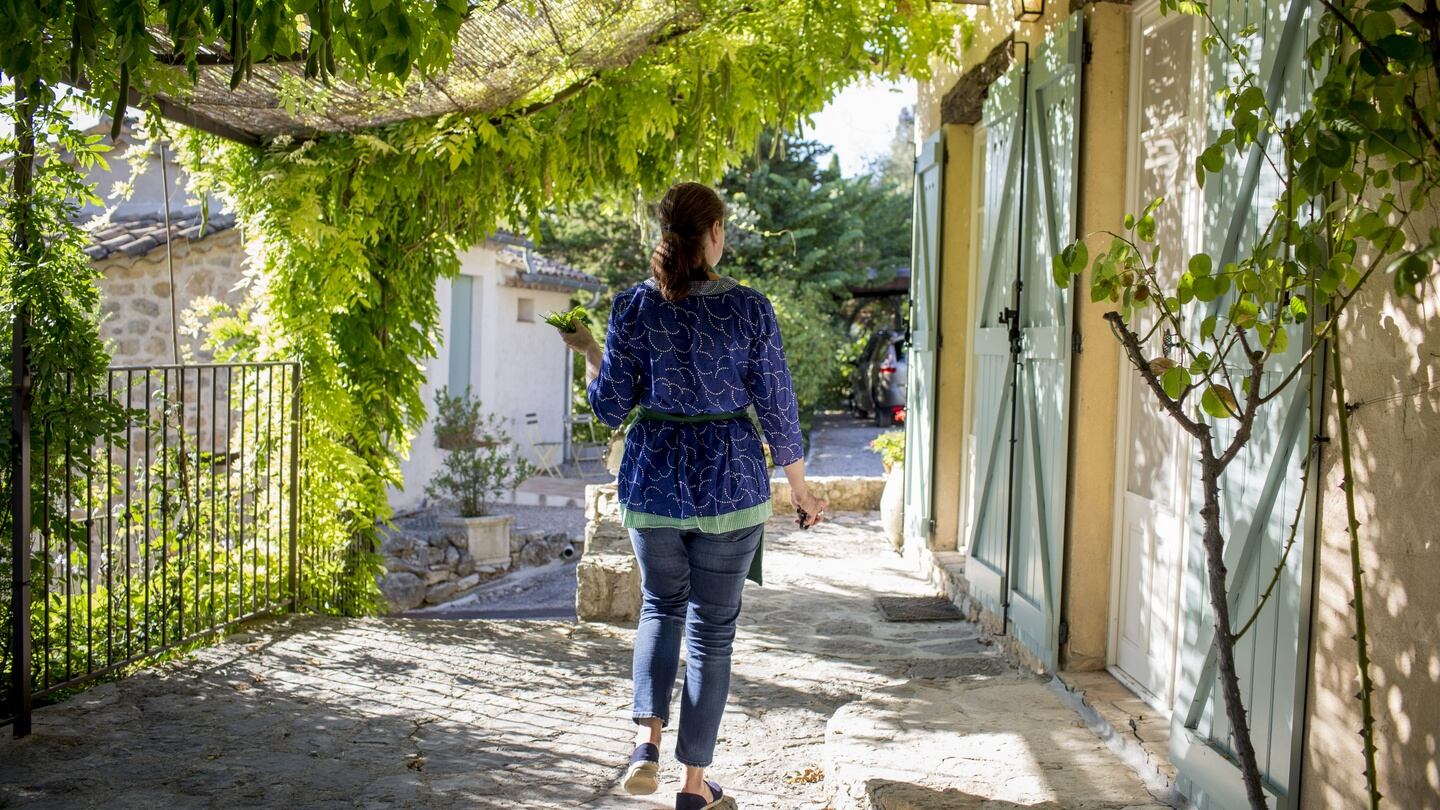When I hefted the rolling pin in my hand, I finally felt it: a thread of energy, a thrill of recognition. I knew I was standing in Julia Child’s kitchen, and I was about to put it to work.
In August, having rented it from the current owners through Airbnb, I spent a week living and cooking in La Pitchoune, the house in Provence that Child and her husband, Paul, built in 1965 and lived in on and off until 1992.
In advance, I worried that the house would have been remodeled and glossed over in the intervening years until nothing of her was left; but I hoped that the kitchen would be a place where her spirit, if not her spatulas, would remain. I planned my cooking around the second volume of Mastering the Art of French Cooking, most of which was produced here between 1965 and 1970.
0 of 3
La Pitchoune is in the hills that rise above the Côte d'Azur, 10 miles north of Cannes, though it feels far from the yachts, crowds and burkini battles of the Riviera. The Childs were drawn to Provence for more elemental reasons: sun, olives, figs, wine.
There was a benefit particular to this out-of-the-way spot: Julia Child and her co-author, Simone Beck, could keep up their work on that long-delayed second volume. Beck and her husband, who owned the land that La Pitchoune is built on, lived in the big farmhouse that still stands a few metres up the sunny, scrubby hillside.
Since the house was run as a cooking school for many years, there is no way to know exactly which utensils, if any, were used by Child. This did not prevent me feeling her presence there. The kitchen still looks essentially as it appears in photographs from the 1960s and 1970s, down to the whisks, the tart rings and that big boxwood rolling pin, all hanging in their assigned places on the pegboard.
Many original artifacts remain: My garlic and shallots went into the small plastic bin she had labeled “ail echalotes” with a Dymo-style label maker. I pulled old and spotted but wickedly sharp carbon-steel knives from the knife block that Paul Child built into the butcher-block counter.
I ate lunch on the terrace where she fed legends like James Beard and MFK Fisher. And on trips afield, I followed the trail of some Provençal foods she loved — snacks like fried zucchini blossoms and socca at the market in Cannes; salted anchovies and local caillette olives in Nice; whole candied clementines and bright crystallized violets at Confiserie Florian near Grasse.
I found the raw ingredients of Julia Child’s Provence intact: eggplants and peach leaves, lemons and goat cheese, along with the markets where they are sold, the producers who make them and the vendors who hawk them with cooking advice thrown in.
’Beat the butter with a rolling pin’
On the long, scarred counter, I opened the book to the section on puff pastry, with its sketch of three butter sticks and a fat rolling pin hovering above them — just like the one I was holding, more than two feet long and as thick as a baseball bat. “Beat the butter with a rolling pin to soften it,” the recipe instructed.
This had never occurred to me. I have painstakingly cut frozen butter into pieces to soften it, and tried to speed it along by tossing the pieces into a running mixer. (This is a good way to get grease marks on the ceiling.) But I had never thought of just whacking it into submission.
This is partly because my modern kitchen doesn't have a collection of powerful hand tools like mallets, ice picks and broomsticks: the last, according to her editor, Judith Jones, was kept on hand for breaking the ankle bones of ducks and geese. Needless to say, the rolling-pin trick worked, producing smooth and supple butter that was still cold: ideal for pastry.
(The Childs built La Pitchoune (they nicknamed it "La Peetch") after the successful publication of Mastering the Art of French Cooking in 1961; they had moved back to the US and were shooting The French Chef for WGBH. But Julia Child still was far from a household name, and the Childs were not rich.
So the kitchen at La Pitchoune isn’t luxurious or spacious; it wouldn’t fill even a corner of Ina Garten’s famous “entertaining barn.” With its pegboard walls and industrial lighting, it looks nothing like a set for a celebrity chef and entirely like what it was built to be: a practical workshop for a home cook with a hell of a lot of work to do.
Famously, Child was a rigorous professional who believed that the science and exactitude of recipes were their most important assets. Beck was an excellent home cook who maintained that her instincts as a native Frenchwoman superseded all other culinary knowledge.
For example, Beck was utterly opposed to developing recipes for bread and croissants, since no Frenchwoman would make them at home. At that time, there was still a family-run bakery in every French town, and every few blocks in a French city. (This, sadly, is no longer the case: The towns near Plascassier are filled with national chains.)
Child, knowing that American cooks of the time couldn't find such things anywhere, was even more determined in favour. Since she had by then learned to trust her own instincts as much as those of her co-author (and became saucy enough to call her "La Super-Française" behind her back), those recipes were painstakingly developed here, with field trips around France to consult bakers, professors and chemists. The final recipes for puff pastry, brioche and basic French bread alone occupy nearly 100 pages of the book.
And although I picked up that rolling pin on Day 2, I didn't make any of them. The August tomatoes at the Cours Saleya market in Nice were too gorgeous, with their multicolored stripes; the farmer from Var who told me that his new potatoes tasted like almonds was too persuasive; the anchovies were too plump and briny to be ignored.
I made a summery potato gratin layered with onions, tomatoes and a paste of garlic, anchovies and basil, pounded in a marble mortar as big as a chamber pot. I made a beef daube from Patricia Wells, a friend of Child's who has also found her voice as a cook in Provence, reasoning that Wells' two bottles of white wine would make a much more summery daube than Child's Provençal classic, with two bottles of red.
And I made a short, half-hidden recipe I had never noticed before that suddenly leapt off page 353. It is jokey in its name and very Julia, with her famous love of cocktail-hour snacks.
La Tentation de Bramafam is a fluffy eggplant-walnut dip with a clear connection to dishes like baba ghanouj. (Bramafam is the name of the estate that encompasses La Pitchoune.) It is tasty, absurdly easy and must have been somehow slipped past La Super-Française, as it contains raw ginger and hot sauce, two of the least-French ingredients imaginable.
As I brought my bowl of it out to the terrace each evening, it was easy to imagine the two women waiting there under the mulberry tree, recovering from a long day of recipe testing with an aperitif and a bite to eat before dinner.
Tired but satisfied, probably with shrimp guts in their hair and flour in the creases of their crow's feet, they would have toasted the hard work that has given such pleasure to so many.– New York Times News Service



















